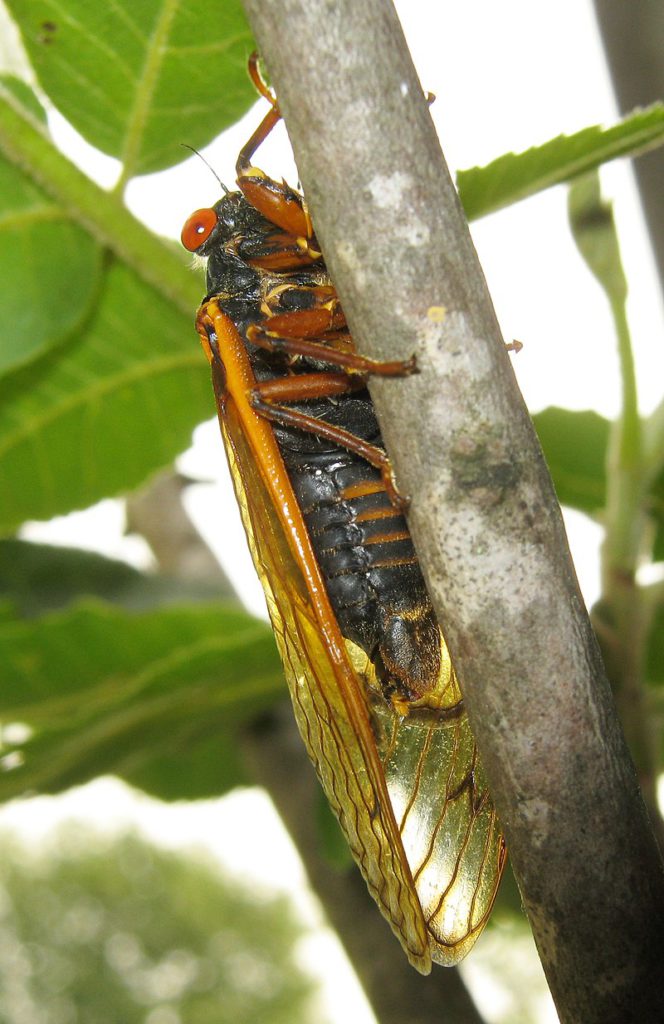Cicadas, known for their periodic emergence and distinct buzzing sound, have captured the curiosity of many. Every few years, various areas will see swarms (more appropriately called “broods”) of cicadas. They will emerge about every 13 to 17 years often overwhelming the area that they spawn in. Once gone, they leave behind their empty shells, and occasionally, just because of how many there are, you may see numerous cicada bodies lying around. Some predators will help out, but if you’re overwhelmed by cicadas and have a healthy compost pile (or want to start one), you might ask if you can compost cicadas and cicada shells.
Yes! You can compost cicada bodies and cicada shells. They are a great source of nutrients for your compost pile. That’s part of why predators, like birds, bats, and other small animals like them.
Here are a couple of benefits of cicadas for your compost:
1. Abundant Source of Nitrogen: Cicadas are rich in nitrogen (green material), an essential element for plant growth. By composting cicadas, you introduce a valuable source of nitrogen into your compost pile. Nitrogen aids in breaking down organic matter, facilitating the decomposition process and helping to create nutrient-rich compost.
2. Reducing Waste: Composting cicadas allows you to divert these insects from ending up in landfills or just rotting in the yard. Instead of discarding them, you can integrate them into the natural cycle of decomposition, contributing to a more sustainable waste management system.
Composting Cicadas – What to Consider
Just like with most things that we compost, we need to consider any downsides. Overall, .
Pests – Particularly when you add the bodies, cicadas may attract pests. If your compost pile isn’t well protected, you may want to forego composting the cicada bodies and just stick with composting the shells. You’ll likely be okay there.
How to Compost Cicadas
Overall, composting cicadas is pretty easy. It’s the usual set of recommendations that we see.
Chopping or Crushing: To facilitate decomposition, consider chopping or crushing the cicadas into smaller pieces before adding them to the compost pile. This helps speed up the breakdown process and ensures they integrate well with other organic materials. If that’s too gross for you, you can just add them to the compost pile; it just might take a little longer for them to compost.
Balancing the Compost: As with any composting process, it is important to maintain a proper balance between carbon-rich (browns) and nitrogen-rich (greens) materials. Since cicadas are nitrogen-rich, mix them with an appropriate amount of carbon-rich brown materials, such as dried leaves, straw, or shredded paper, to maintain the ideal carbon-to-nitrogen ratio in the compost pile.

Can You Compost Cicadas? Yes and Cicadas Shells Too
Composting cicadas can be a sustainable and environmentally friendly approach to utilizing these insects when a brood emerges. By composting cicadas, you introduce a valuable source of nitrogen into your compost pile, contribute to waste reduction, and nurture nutrient-rich compost for your plants. Remember to consider the maturity of the cicadas, potential pest attraction, personal preferences, and cultural considerations when deciding to compost these intriguing insects. By incorporating cicadas into your composting practice, you embrace a natural cycle of decomposition while nourishing your garden and promoting a greener environment.
Featured Image Courtesy of Wikipedia – License Details
